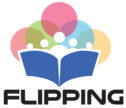Introduction
Welcome to our blog post on flipped learning, a cutting-edge approach to education that is revolutionizing the way we teach and learn. In this post, we will explore how this innovative model is transforming traditional educational systems, benefiting both learners and the society as a whole. Let’s dive in!
The Power of Blended Learning
As we have witnessed in recent times, the shift to online classes has exposed the rigidity of traditional educational systems. However, it has also demonstrated that embracing different teaching models is not only achievable but can also act as a catalyst for development. Blended learning, particularly the flipped learning model, has emerged as a game-changer in this scenario.
A 2015 meta-analysis revealed that blended learning models, which combine elements of face-to-face and online instruction, are more effective than either approach alone. This finding alone should encourage us to invest our efforts in mastering these models, as they offer a multitude of benefits. Not only do they adapt well to uncertain times, but they are also better suited to meet the evolving demands of the labor market.
Flipped Learning: A Paradigm Shift
Among the various blended learning models available, our consortium has chosen to focus on flipped learning. So, what exactly is flipped learning? It is a methodology that involves learners watching online lectures, accessing additional resources, and engaging in online discussions or research at home. The classroom then becomes a collaborative space where learners can apply and reinforce what they have learned, guided by a mentor.
This approach flips the traditional classroom dynamic, putting learners at the center of their own educational journeys. By empowering learners to take charge of their learning outside the classroom, flipped learning promotes a deeper understanding of concepts and encourages critical thinking and problem-solving skills.
The Benefits of Flipped Learning
Flipped learning offers a multitude of benefits that make it an attractive option for learners and educators alike. Firstly, it allows learners to progress at their own pace, ensuring that no one gets left behind. This personalized learning experience fosters a sense of ownership and autonomy, leading to increased motivation and engagement.
Secondly, flipped learning promotes active learning and peer collaboration. The classroom becomes a space for interactive discussions, group activities, and hands-on projects, where learners can engage with their peers and learn from each other’s perspectives.
Lastly, flipped learning prepares learners for the demands of the modern workforce. By focusing on application-based and problem-solving-based approaches, learners develop the skills that are highly sought after in today’s job market. They learn to think critically, creatively, and work effectively in teams, setting them up for success in their future careers.
Conclusion
Flipped learning is undoubtedly a game-changer in the world of education. With its ability to adapt to changing circumstances and meet the demands of the labor market, it is a model that we should all be excited about. By embracing flipped learning, we unlock the potential for a more effective and engaging educational experience. Let’s seize this opportunity to transform education for the better!
